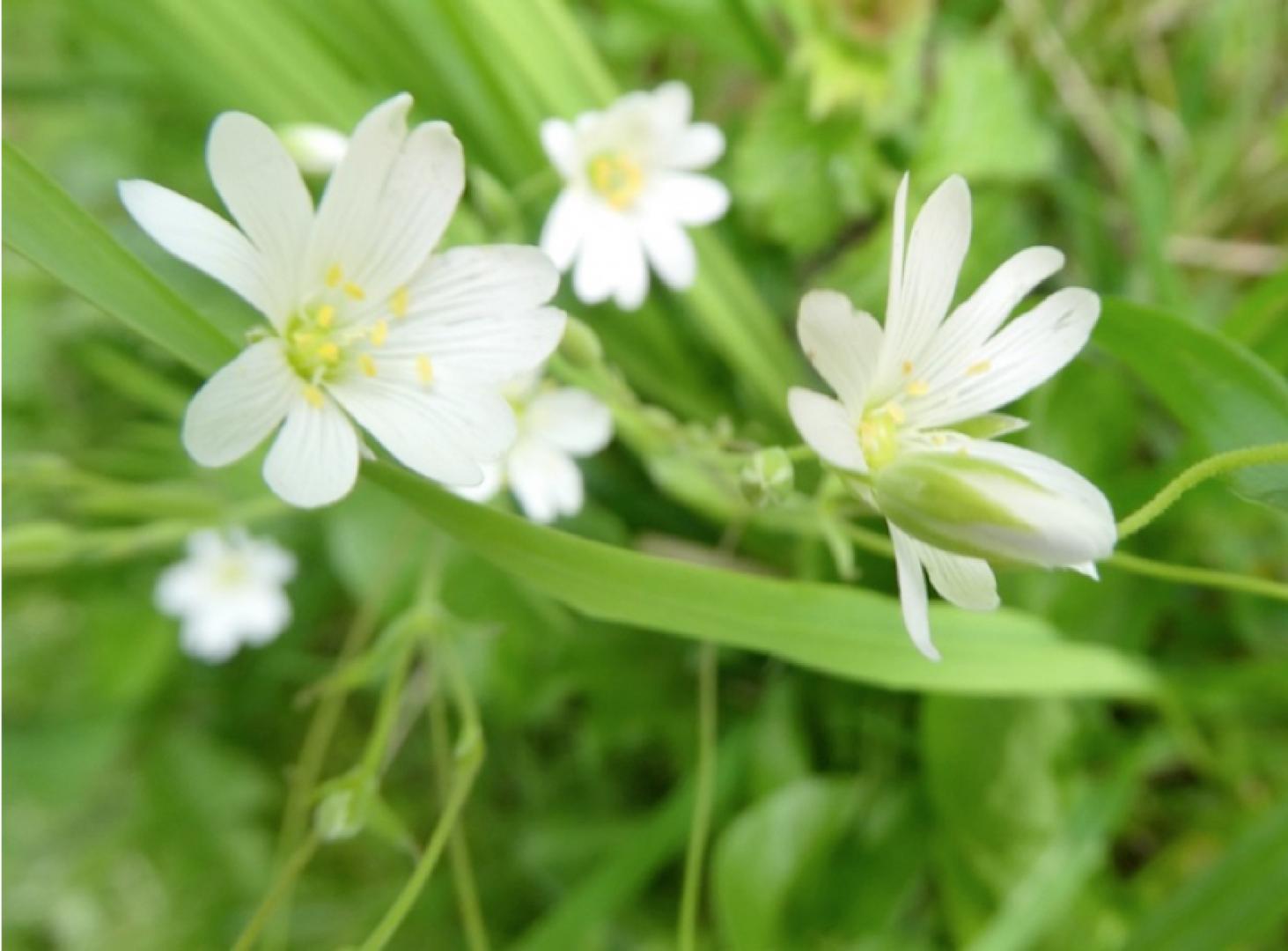Greater Stitchwort Rabelera holostea (Stellaria holostea)
GREATER stitchwort is a member of the pink family, the Caryophyllaceae. Although a number of the family have pink flowers, the name “Pinks” is not thought to relate to the colour of the flower, rather to the “pinking” or “notching” at the ends of the petals of many species.
In sewing, pinking scissors are used to create a zig-zag pattern at the fabric edge and this is thought to be the origin of the name.
Currently, the family contains 25 genera in the UK, including sandworts, chickweeds, stitchworts, campions, pearlworts, soapworts and pinks.
Many of the genera have been used for medicinal purposes in the past and also cultivated as cottage garden plants. Carnations, pinks and sweet Williams are among the old favourites.
Greater stitchwort (Rabelera holostea) has quite a varied range of common names, some are self explanatory such as greater star-wort. Stinkwort, brassy buttons and milkmaids may require a little more thought.
Snap-dragon stems easily break and the seed capsules pop as they mature.
From April to June, the star like flowers can be spotted by the roadsides, within the hedgerows and along woodland edges.
Often, their straggly stems are supported by the bluebells or the fresh green foliage of many other emerging herbaceous plants.
Greater stitchwort is more readily distinguished from many similar members of the pink family by the greyish green, grass-like leaves.
Hairless and stalkless, the leaves are arranged in opposite pairs. Each pair is attached at right angles to the pair below at swollen nodes on the square stem.
The large white flowers (2-3cm in diameter) are also a good guide. A superficial glance may suggest that there are ten white petals.
On closer inspection, you will see that there are five white petals which are deeply divided to at least half way.
Look down into the centre of these pure white flowers and you will observe two rings of yellow stamens.
Over time they change, firstly the inner ring matures and stands erect followed by the outer ring. Finally as the stamens fade and the female stigmas curl outwards over them.
This cycle of events ensures the stitchwort is successfully pollinated either by cross-pollination from visiting insects or as a last resort self-pollination when the stigmas curl back and pick up the pollen from the nearby anthers. The prolific little green balls full of seed which then develop confirm the success of this approach.
Any plant with the term “wort” was thought to have some type of herbal association. Stitchwort is no exception. Records of its medicinal use occur well before Gerard’s herbal of 1597.
“They are wont to drink it in wine with the powder of acorns, against the pain in the side, stitches, and such like,” states Gerard’s Herbal Vol. 1
Greater stitchwort is an important source of nectar to many insects, orange-tip butterflies, bees, and several moths.
Lizzie Maddison
Upper Teesdale
Botany Group
ADVERTISEMENT
Flora and fauna: Herbal remedy – and a vital source of nectar
ADVERTISEMENT
ADVERTISEMENT
ADVERTISEMENT







